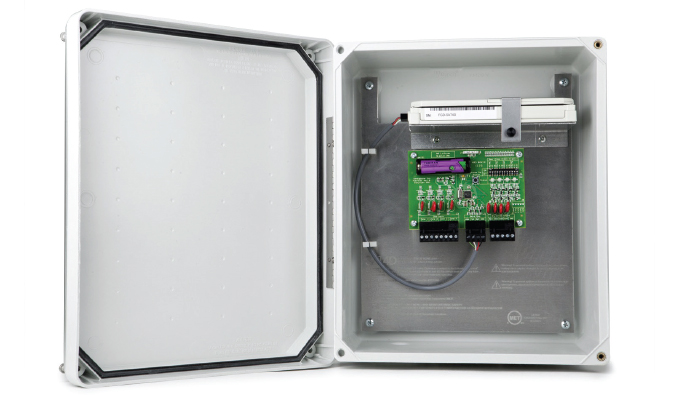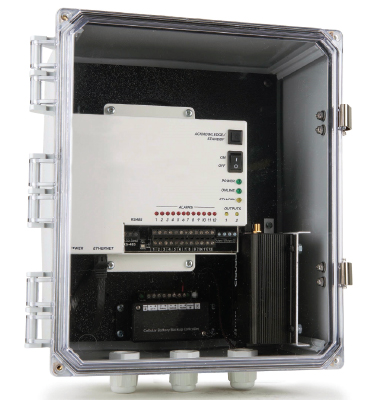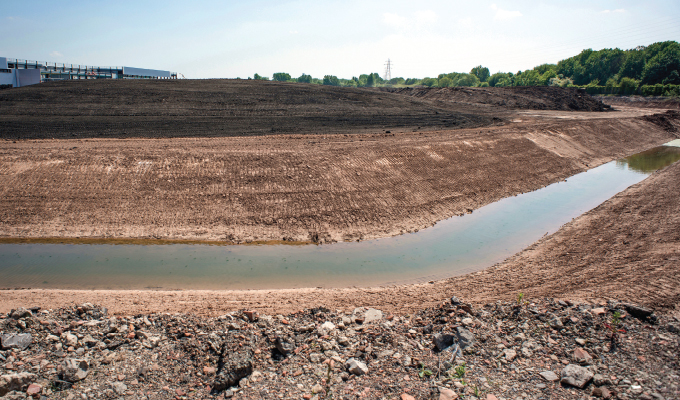By Rob Fusco, Sensaphone
Environmental remediation projects can take months to years of around-the-clock extraction of pollutants to clear water and soil of contaminants from accidents such as storage tank leaks, chemical spills and waste discharge. Remediation site managers face many challenges, such as meeting project goals, controlling costs, keeping the site running, and protecting the environment. At the top of the list of responsibilities is meeting regulatory requirements. Federal, state or local regulators can fine operators if the site becomes nonoperational for a period of time during an unplanned shutdown.
Incorporating remote monitoring technology into the process can increase efficiency because managers are alerted immediately of potential equipment malfunction and environmental changes that can halt the operation. These monitoring systems provide an easy, affordable way to receive actionable information to keep equipment running, reduce downtime, and avoid costly fines.
With a monitoring system, managers can keep 24/7 watch on the performance of key equipment components and receive instant notification if sensor readings move outside of the required parameters. They can also access real-time and historical data, log information, look for trends that could indicate a problem and generate records for regulatory reports.
HOW REMOTE MONITORING WORKS
Remote monitoring systems are installed at both staffed and unattended sites to monitor conditions around the clock. This reduces the need for constant staffing and helps to avoid unnecessary or time-consuming visits to the site to check the status of the remediation equipment.
A monitoring system consists of a base unit that constantly collects data from existing equipment or sensors placed at key points at the site. The number of external sensors used depends on the number of inputs on the base unit. Users program the devices to specify the desired high or low parameters on the monitored sensors. The base unit contacts designated personnel when a sensor reading moves out of the preset limits. Managers can receive these notifications via phone, email, or text.
Most remediation sites have a SCADA, PLC, or control panel locally monitoring and controlling the operation of the site. Advanced remote monitoring systems can seamlessly integrate into a panel or SCADA system that supports Modbus RS485 and TCP IP. This enables site managers to see the panel reading right from their phone via an app or the website. They can integrate the monitoring system into floats, pump alarm outputs, level transducers, and other equipment. They can also connect external sensors to monitor temperature fluctuations, flow rate, power failure, and security breaches.

CONNECTIVITY
Monitoring systems that are robust enough to handle the demands of a remediation site require an internet or wi-fi connection and access to an electrical outlet to power them. But for areas that do not have an internet or cellular connection, satellite systems are available. Cellular systems need to be registered on a wireless network like Verizon or AT&T in order to send or receive messages. If cellular signal strength is spotty or nonexistent at the site, consider the satellite option.
Satellite-based monitoring systems are convenient, powerful devices suitable for even the most remote locations. The systems use satellite technology to provide virtually unlimited coverage throughout the United States and many other countries without relying on telephone lines, Ethernet connections, or cellular networks. They can operate in a wide range of temperatures without any effect on battery life. Site managers can access information and make programming changes via the system’s dedicated website.
Cloud-based monitoring systems can monitor, deliver alarms and log input/output point data from third-party Modbus sensors, transducers, and PLCs. This enables site managers to remotely access the values pulled from Modbus equipment or external sensors at all their remediation sites from a user-friendly dashboard using an app or website.
A cloud-based unit monitors itself by constantly sending a signal to the cloud to confirm the system is online. If the internet connection is lost or there is a cellular communications problem, the system sends an alert to designated users via phone, text, or email. Managers do not have to worry about losing data if the cloud connection is interrupted because all information gathered during this time is stored in the device and will be uploaded to the cloud when the connection is restored.

DATA LOGGING AND REPORTING
In addition to providing remote monitoring of remediation equipment, these systems automatically log the data required for compliance reports because they are equipped with data acquisition functionality that provides real-time and historical information on equipment performance. They collect and record precise data, including flow rates, run times, and operational standards required for environmental remediation reporting. Essential data to log includes blower runtimes, pilot and flare temperatures, liquid or air flow totals, shutdown and startup events, and VOC levels.
ADDING IT UP
Site remediation is complex, and any unexpected stoppage of the process can have serious environmental and regulatory consequences. However, constant monitoring of equipment and conditions is not complicated or expensive. Using the right remote monitoring system for the scope and specs of the remediation site gives site managers early warning of a potential problem, so they can respond quickly to avert a significant malfunction.
IMPORTANT EQUIPMENT AND CONDITIONS TO MONITOR
| EQUIPMENT | CONDITIONS |
|---|---|
| Soil vapor extraction vacuum blowers and pumps | Float level, pump alarm, airflow, vibration, power |
| Carbon units | Differential pressure to detect clogging, temperature to prevent carbon from igniting |
| Groundwater treatment equipment | Float level, pump alarm, power, pressure |
| Leachate liquid control systems | Float level, pump alarm, power, pneumatic pressures |
| Landfill gas collection and control systems | Airflow, pressure, power, temperature |
| Volatile organic compounds monitors | Airflow, power |
| Air sparge compressor | Temperature, airflow, pressure |
| Vacuum blower | Pressure, vibration, power |
| Air strippers | Pressure on/off, power |
| Power sources | Power |
| Generators | Power, automatic transfer switch relay, fuel level |
FOR MORE INFORMATION
Rob Fusco is director of business development with Sensaphone, a developer and manufacturer of remote monitoring and alerting systems. He can be reached at rfusco@sensaphone.com or 877.373.2700. For more information, visit www.sensaphone.com.
MODERN PUMPING TODAY, November 2021
Did you enjoy this article?
Subscribe to the FREE Digital Edition of Modern Pumping Today Magazine!



